Cursive Alphabet: Letter Y Worksheet and Practice Methods
Cursive Y is a unique letter. It starts like a smooth curve, then drops down with a long tail that goes below the line. While lowercase y flows like a cursive u with a hook, uppercase Y stands tall with a more formal shape.
In this guide, you’ll learn how to write both lowercase and uppercase cursive Y, how to connect them to other letters, and which practice techniques help you master the strokes. A printable worksheet is also included to help you practice at home or in class.
Let’s get started with the worksheet.
Download Free Printable Cursive Y Worksheet
This worksheet is designed to help you write cursive Y with accuracy and confidence. Print it out and use a pencil with a fine tip. Start by tracing slowly, then move to freehand writing once you feel steady. Daily practice, even just 5–10 minutes, can improve your control and consistency.
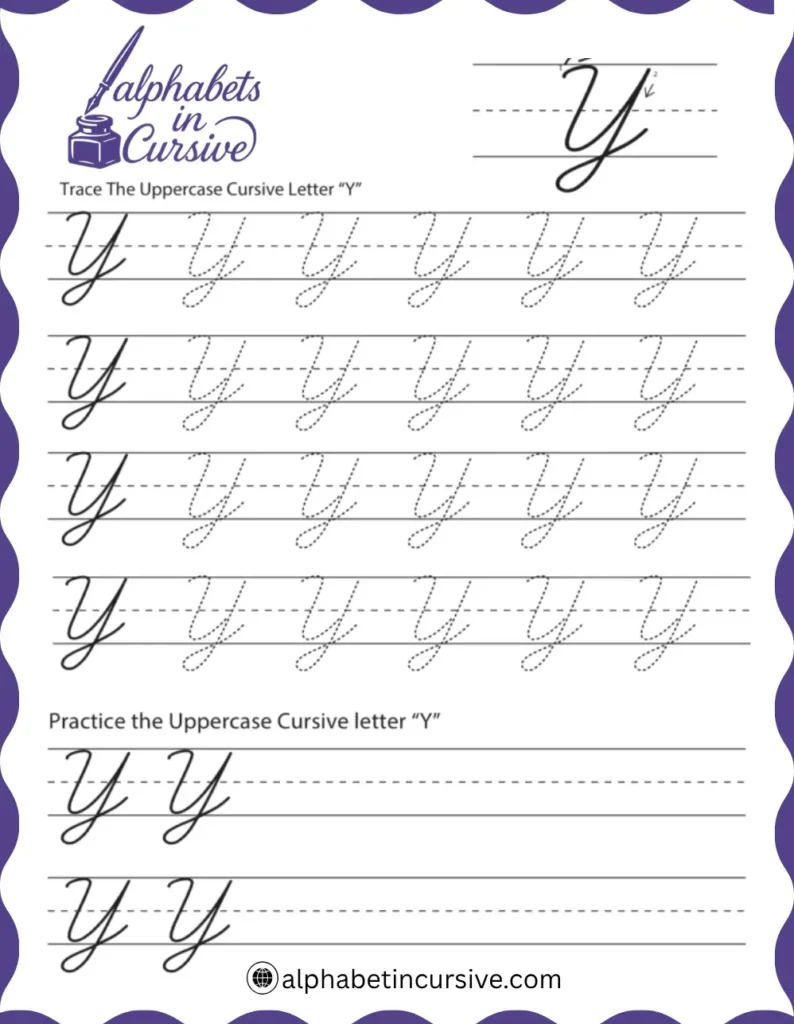
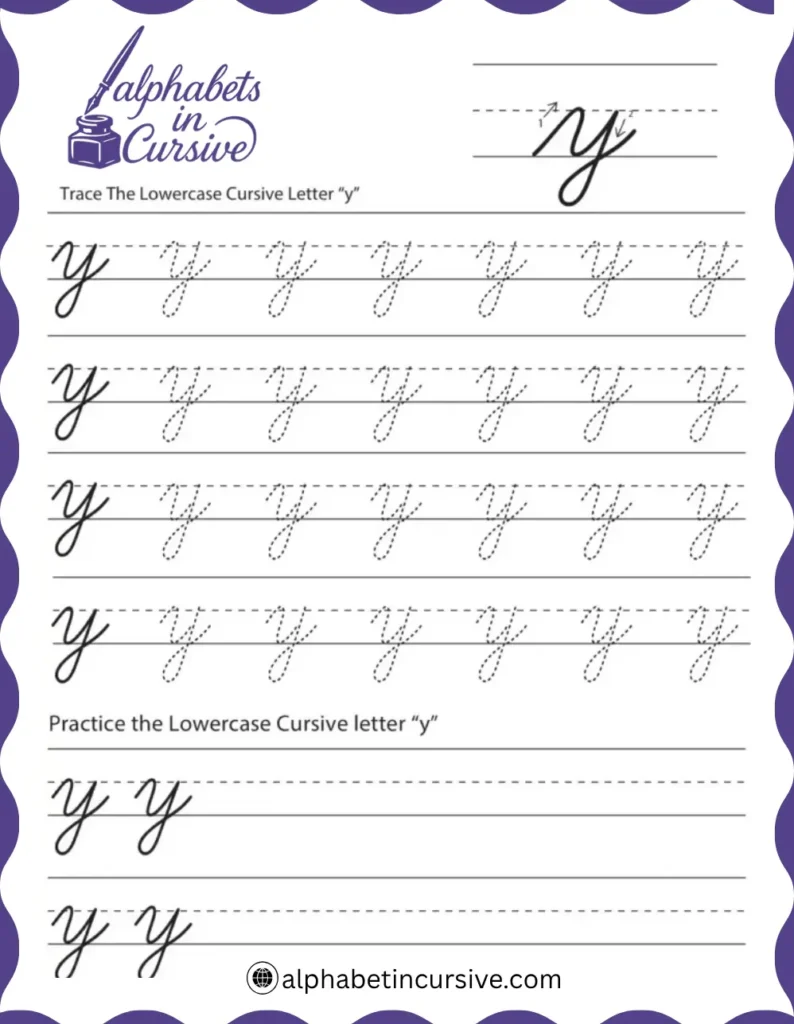
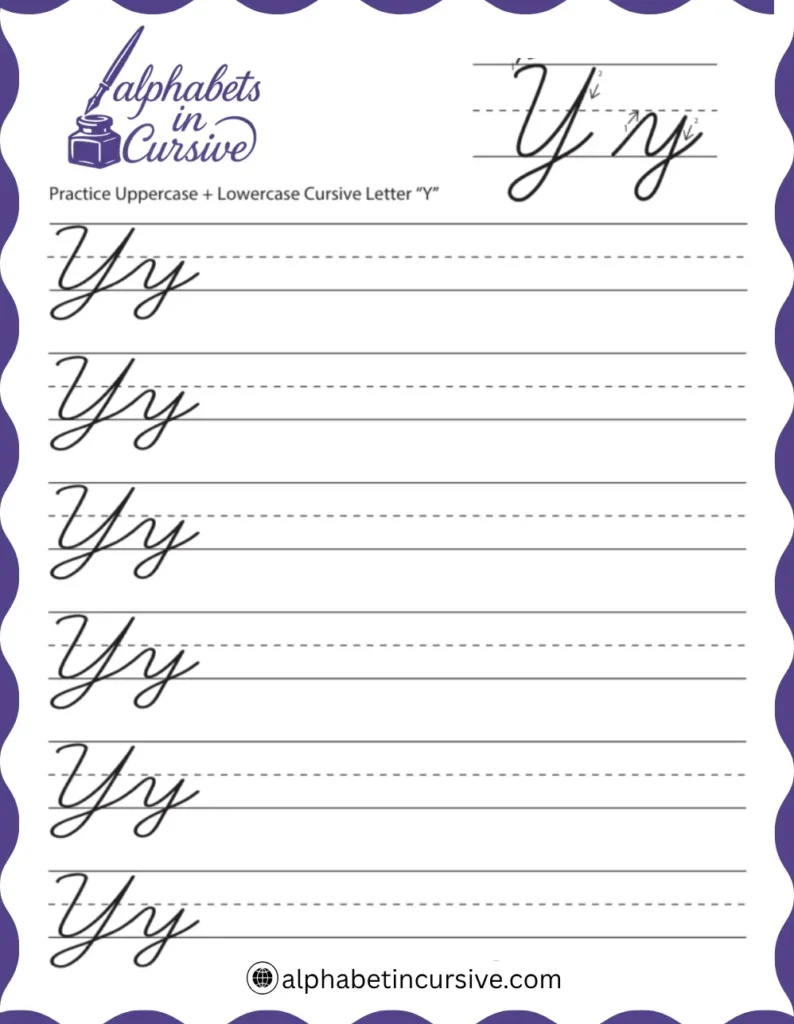
How to Write the Cursive Letter Y
The cursive Y looks smooth and flowing but needs control, especially in the downstroke and tail. It’s important to balance height and length for legibility.
How to Write Lowercase Cursive Y
Think of it as a cursive “u” followed by a tail. Keep the tail narrow to avoid crowding the next letter.

- Start at the bottom line
- Curve up to the midline
- Loop back down to the bottom line in a slanted stroke
- Continue the stroke below the line, forming a tail that loops to the left
- End with a slight upward curve to prepare for the next letter
How to Write Uppercase Cursive Y
Uppercase Y is wide and formal. Focus on even curves and keep it balanced on the line.

- Begin at the top line
- Slant down to the midline with a smooth stroke
- Curve up slightly, then make a large loop that crosses down to the baseline
- Finish with a small hook or upward exit stroke
How to Connect Cursive Y to Other Letters
Connecting Y in cursive depends on how you finish its tail. Lowercase y often loops up to meet the next letter, while uppercase Y rarely connects but can end with a soft exit stroke.
How to Connect Lowercase Cursive Y
Don’t over-stretch the tail — it should be short and rounded to stay readable.
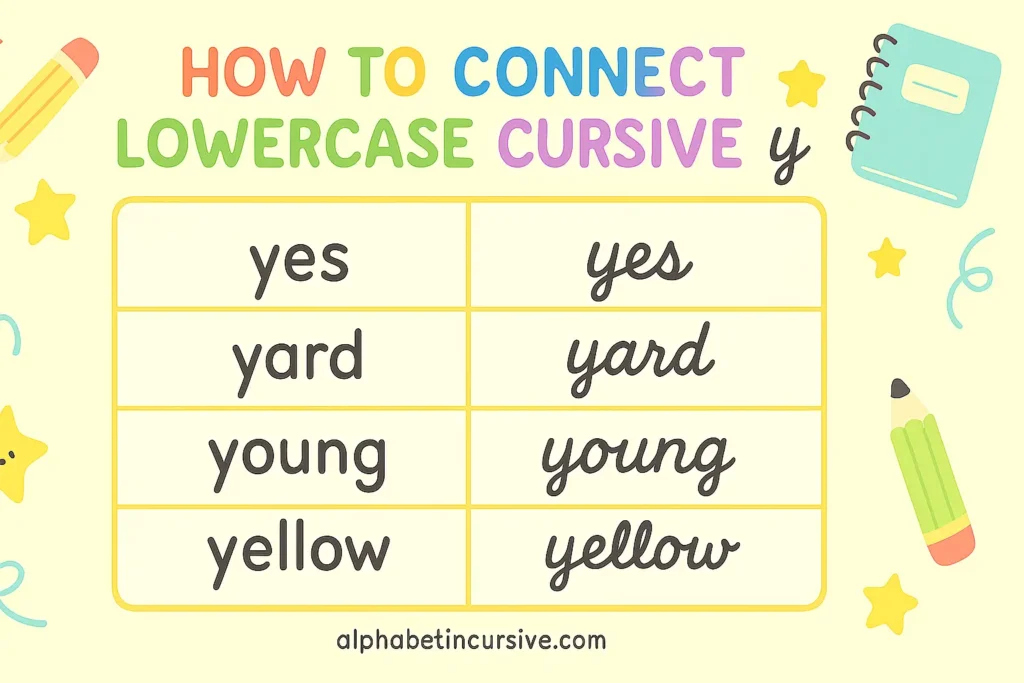
- After forming the tail, curve it upward just above the baseline
- This small curve acts as the starting point for the next letter
- Works well with letters like a, o, e, and u
Examples:
yes, yard, young, yellow
How to Connect Uppercase Cursive Y
Focus on spacing. Even if you don’t connect, make sure letters sit close together for smooth flow.
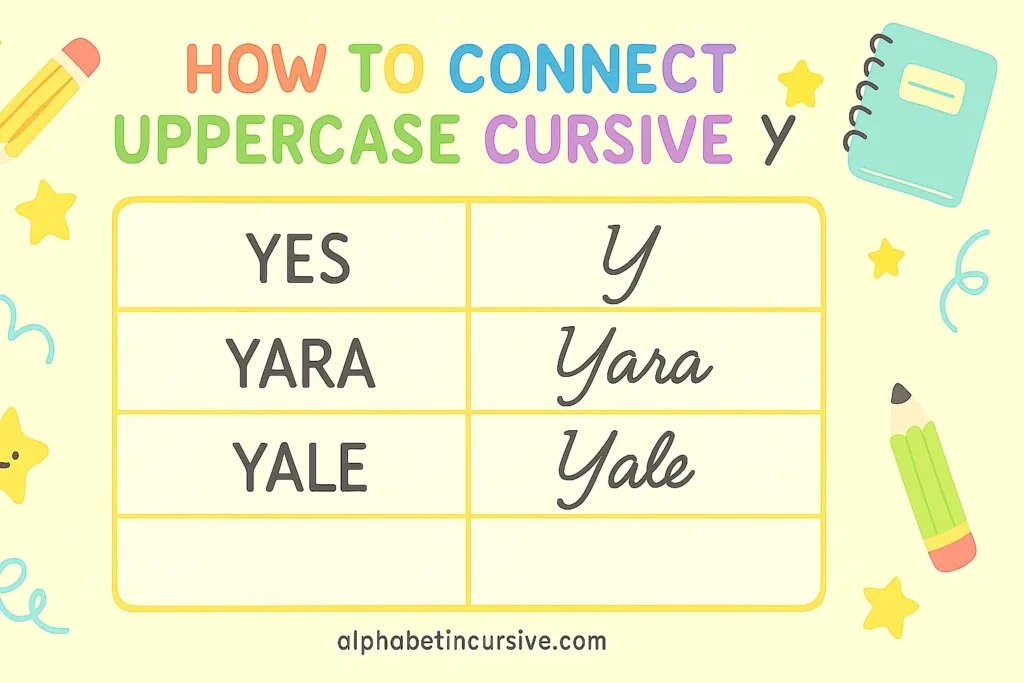
- Uppercase Y usually stands alone at the start of words
- Some writers add a gentle exit stroke to meet the next letter
- Best when used in names or titles like Yasmin or Yvonne
Examples:
Yara, Yale
Practice Methods for Writing Cursive Y
Mastering cursive Y takes regular, focused writing. Its curved top and long tail need muscle control and spacing awareness. Here’s how to build that skill:
Start with guided tracing
Use lined sheets with lowercase and uppercase Y in dotted form. Trace slowly to build shape memory.
Drill tail strokes
Practice the tail section separately. Write loops that go below the baseline, then curve neatly back up.
Write simple words
Focus on short, repetitive words like yes, yet, you, yard. Write each one several times, watching the spacing and connections.
Use movement warm-ups
Before writing, draw a row of small loops and large curves. This warms up your hand for smooth strokes.
Switch between upper and lower case
Write Yy in pairs across the page. This helps you balance both forms in one go.
Track progress
Date your practice sheets and compare them over time. Improvement comes from noticing what looks better.
Frequently Asked Questions
Why does my cursive Y look like a cursive G?
This happens when the tail loops too far left or becomes rounded. Keep the tail narrow and let it curve slightly before coming back up.
Can I write cursive Y without the full tail?
Yes. Some handwriting styles shorten the tail for speed. As long as it’s clear and connects well, it’s fine in school or personal writing.
How do I teach kids to remember the shape of cursive Y?
Use a simple trick: call it a “cursive u with a hook.” Kids remember it better when they link it to a shape they already know.
What’s a good way to fix uneven tails in cursive Y?
Practice slow motion strokes below the line. Try writing 10 tails in a row on dotted paper. Focus on keeping the loop tight and ending just above the baseline.
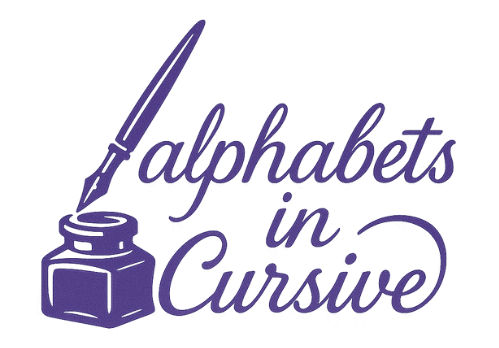
This guide is genuinely a pleasant one